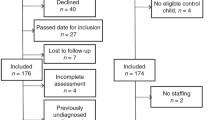Abstract
Premature birth has an obvious effect on all the systems of the body, including the cardiovascular system, which undergoes significant adaptive changes in the early postnatal period of ontogenesis. A comprehensive understanding of the consequences of preterm birth is necessary to ensure early prevention, identification, and treatment of the long-term adverse health consequences of this effect. The purpose of this study was to evaluate the effect of premature birth on the structure of the wall of the ascending aorta in rats. The paper presents the results of a histological and morphometric analysis of the wall of the ascending aorta of Wistar rats born on days 21 and 21.5 of pregnancy (the full gestation period is 22 days). In the wall of the ascending aorta of prematurely born rats, signs of elastolysis and a violation of the parallel arrangement of elastic laminae were found. It has been shown that premature birth results in a decreased specific volume of elastic fibers and increased collagen fibers in the tunica media of the wall of the ascending aorta of prematurely born rats.





Similar content being viewed by others
REFERENCES
Arribas, S.M., Hinek, A., and Gonzalez, M.C., Elastic fibers and vascular structure in hypertension, Pharmacol. Ther., 2006, vol. 111, p. 771.
Averkin, N.S., Fedorova, M.G, Latynova, I.V., Stolyarov, A.P., and Kharitonov, E.A., The interrelation between the individual morphometric parameters of the arterial wall and their dependence on age, Izv. Vyssh. Uchebn. Zaved., Povolzh. Reg., Med. Nauki, 2020, vol. 2, p. 99.
Bertagnolli, M., Luu, T., Lewandowski, A., Leeson, P., and Nuyt, A.-M., Preterm birth and hypertension: is there a link?, Curr. Hypertens. Rep., 2016, vol. 18, p. 28. https://doi.org/10.1007/s11906-016-0637-6
Chatmethakul, T. and Roghair, R.D., Risk of hypertension following perinatal adversity: IUGR and prematurity, J. Endocrinol., 2019, vol. 242, p. T21.
Cho, M.H., Hypertension in adulthood is programmed during the perinatal period, Clin. Exp. Pediatr., 2022, vol. 65, p. 494.
Concannon, J., Dockery, P., Black, A., Sultan, S., Hynes, N., McHugh, P.E., Moerman, K.M., and McGarry, J.P., Quantification of the regional bioarchitecture in the human aorta, J. Anat., 2020, vol. 236, p. 142.
de Jong, F., Monuteaux, M.C., van Elburg, R.M., Gillman, M.W., and Belfort, M.B., Systematic review and meta-analysis of preterm birth and later systolic blood pressure, Hypertension, 2012, vol. 59, p. 226.
Hovi, P., Vohr, B., and Ment, L.R., Blood pressure in young adults born at very low birth weight: adults born preterm international collaboration, Hypertension, 2016 vol. 68, p. 880.
Huyard, F., Yzydorczyk, C., Castro, M.M., Cloutier, A., Bertagnolli, M., Sartelet, H., Germain, N., Comte, B., Schulz, R., DeBlois, D., and Nuyt, A.M., Remodeling of aorta extracellular matrix as a result of transient high oxygen exposure in newborn rats: implication for arterial rigidity and hypertension risk, PLoS One, 2014, vol. 9: e92287.
Lawn, J., Ohuma, E., and Bradley, E., Small babies, big risks: global estimates of prevalence and mortality for vulnerable newborns to accelerate change and improve counting, Lancet, 2023, vol. 401, p. 1707.
Liefke, J., Steding-Ehrenborg, K., Sjöberg, P., Ryd, D., Morsing, E., Arheden, H., Ley, D., and Hedström, E., Higher blood pressure in adolescent boys after very preterm birth and fetal growth restriction, Pediatr. Res., 2023, vol. 93, p. 2019.
Liyanage, L., Musto, L., Budgeon, C., Rutty, G., Biggs, M., Saratzis, A., Vorp, D.A., Vavourakis, V., Bown, M., and Tsamis, A., Multimodal structural analysis of the human aorta: from valve to bifurcation, Eur. J. Vasc. Endovasc. Surg., 2022, vol. 63, p. 721.
Martyn, C.N. and Greenwald, S.E., Impaired synthesis of elastin in walls of aorta and large conduit arteries during early development as an initiating event in pathogenesis of systemic hypertension, Lancet, 1997, vol. 350, p. 953.
Nuyt, A.M., Lavoie, J., Mohamed, I., Paquette, K., and Luu, T.M., Adult consequences of extremely preterm birth: cardiovascular and metabolic diseases risk factors, mechanisms, and prevention avenues, Clin. Perinatol., 2017, vol. 44, p. 315.
O’Rourke, M.F., Staessen, J.A., Vlachopoulos, C., Duprez, D., and Plante, G.E., Clinical applications of arterial stiffness; definitions and reference values, Am. J. Hypertens., 2002, vol. 15, p. 426.
Picut, C.A., Ziejewski, M.K., and Stanislaus, D., Comparative aspects of pre- and postnatal development of the male reproductive system, Birth Defects Res., 2018, vol. 110, p. 190.
Rossi, P., Tauzin, L., Marchand, E., Boussuges, A., Gaudart, J., and Frances, Y., Respective roles of preterm birth and fetal growth restriction in blood pressure and arterial stiffness in adolescence, J. Adolesc. Health, 2011, vol. 48, p. 520.
Sokolis, D.P., Krithais, E.P., Giagini, A.T., Lampropoulos, K.M., Papadodima, S.A., and Iliopoulos, D.C., Biomechanical response of ascending aortic aneurysms: association with structural remodeling, Comput. Methods Biomech. Biomed. Eng., 2012, vol. 15, p. 231.
Toyono, M., Ito, T., Harada, K., Tamura, M., and Takada, G., Morphological adaptation of the cardiovascular system in fetal rats during late gestation, Tohoku J. Exp. Med., 1999, vol. 188, p. 299.
Tsamis, A., Krawiec, J.T., and Vorp, D.A., Elastin and collagen fibre microstructure of the human aorta in ageing and disease: a review, J. R. Soc. Interface, 2013, vol. 10, p. e20121004.
Funding
This work was supported by the Russian Science Foundation, project no 24-25-0001
Author information
Authors and Affiliations
Corresponding author
Ethics declarations
ETHICS APPROVAL AND CONSENT TO PARTICIPATE
All studies were conducted in accordance with the principles of biomedical ethics as outlined in the 1964 Declaration of Helsinki and its later amendments. They were also approved by the ethics committee of the Siberian State Medical University of Ministry of Health of Russia, Tomsk (protocol no. 8473/1, November 30, 2020).
CONFLICT OF INTEREST
The authors of this work declare that they have no conflicts of interest.
Additional information
Publisher’s Note.
Pleiades Publishing remains neutral with regard to jurisdictional claims in published maps and institutional affiliations.
Rights and permissions
About this article
Cite this article
Serebryakova, O.N., Ivanova, V.V. & Milto, I.V. Structural Features of the Wall of the Ascending Aorta of Premature Rats. Cell Tiss. Biol. 18, 221–228 (2024). https://doi.org/10.1134/S1990519X23700098
Received:
Revised:
Accepted:
Published:
Issue Date:
DOI: https://doi.org/10.1134/S1990519X23700098




